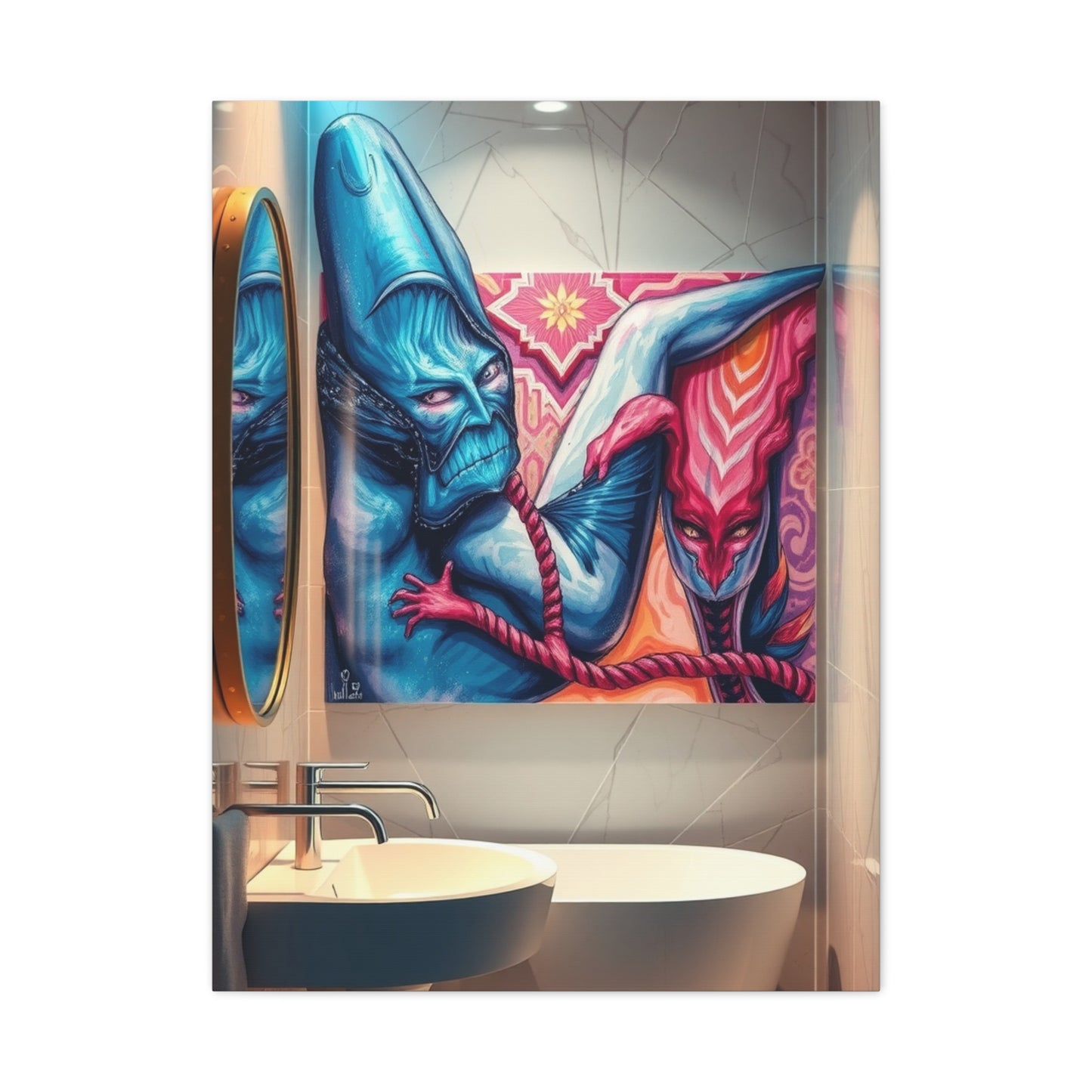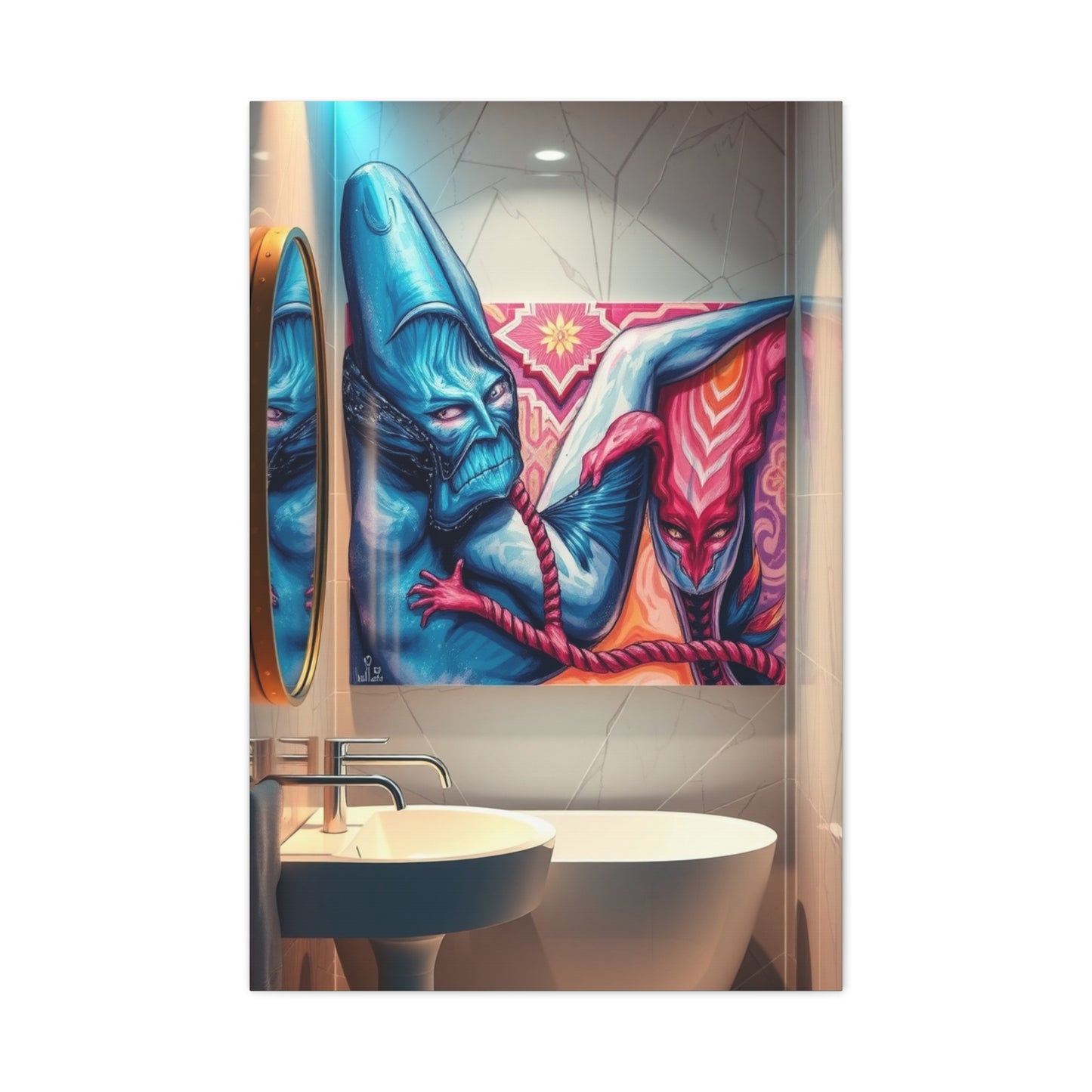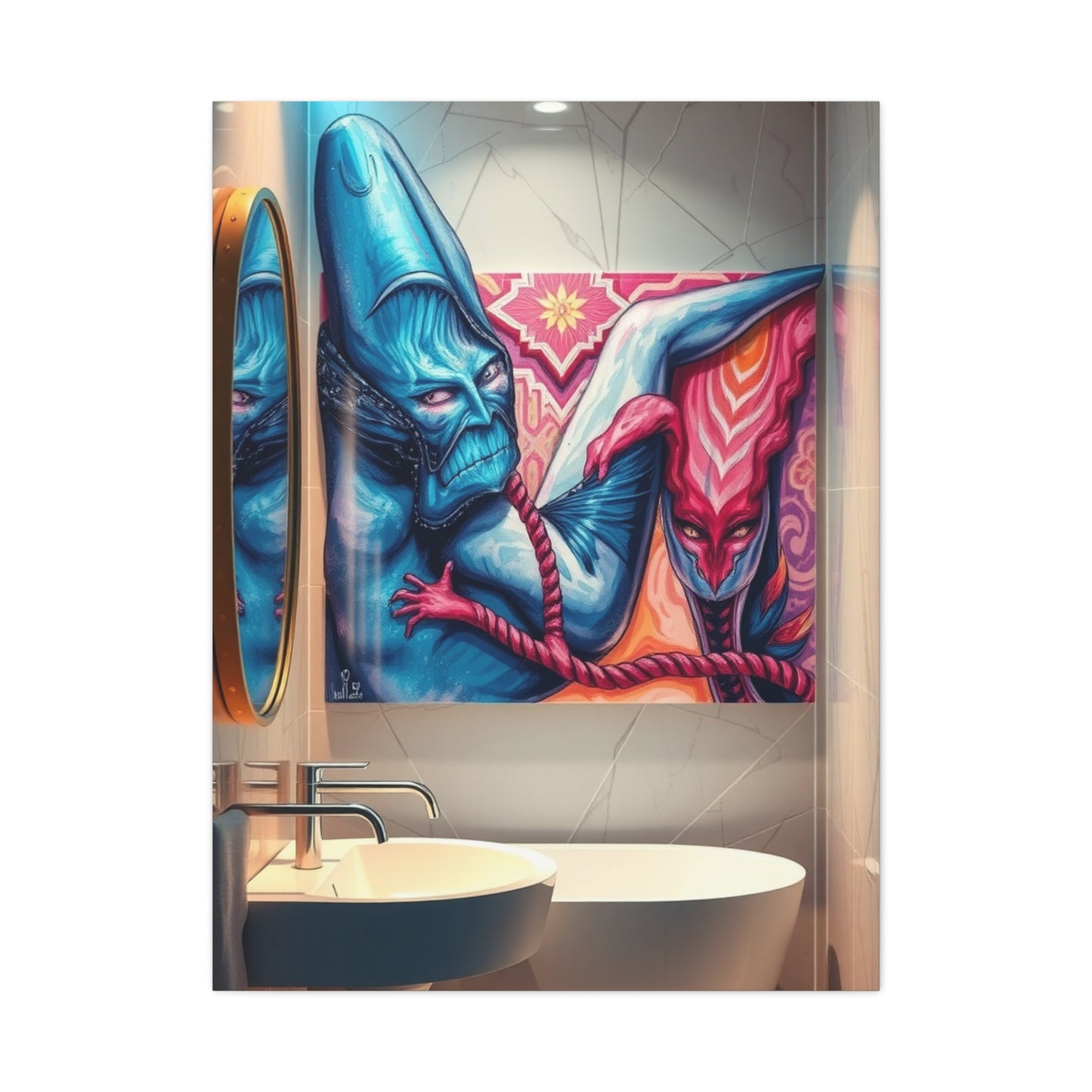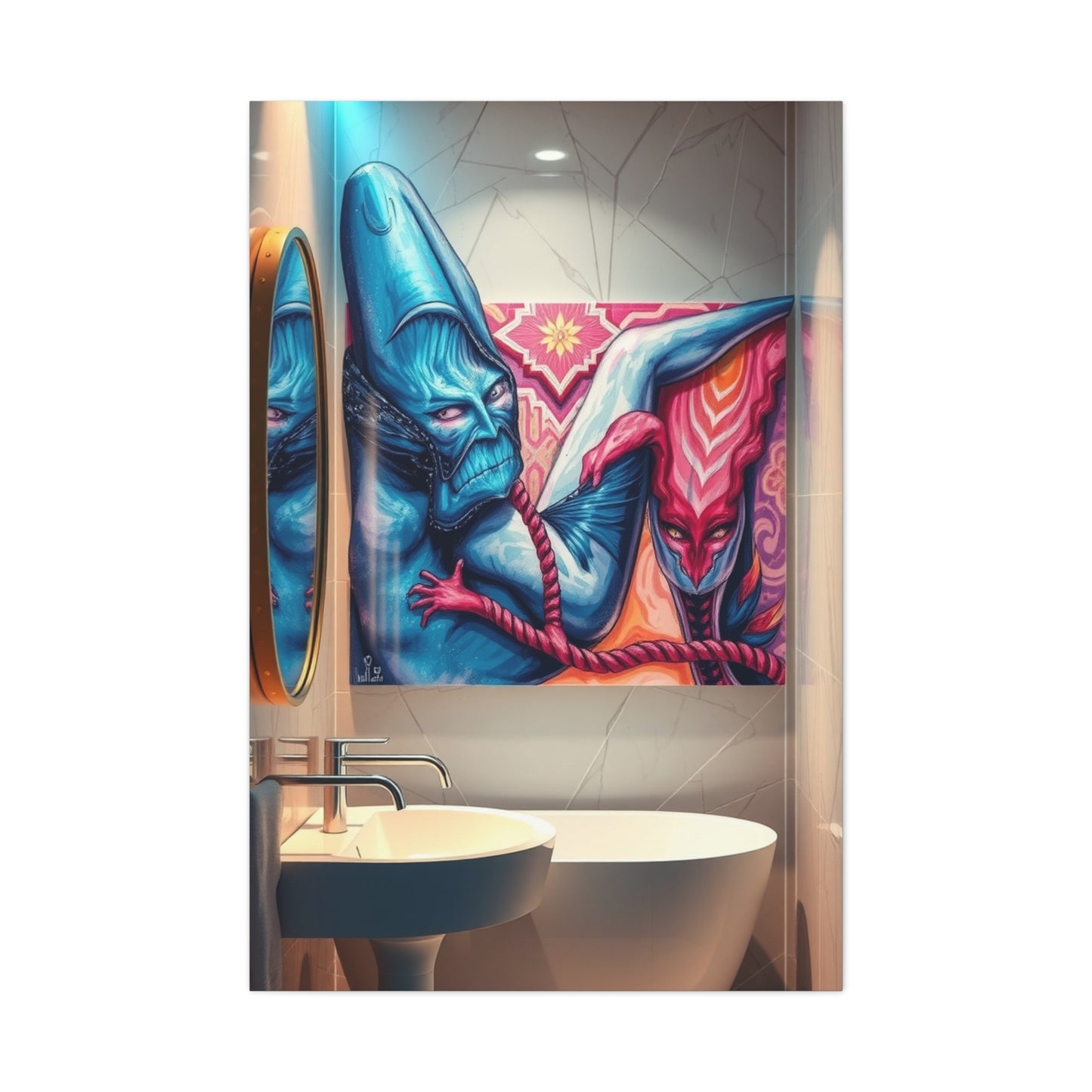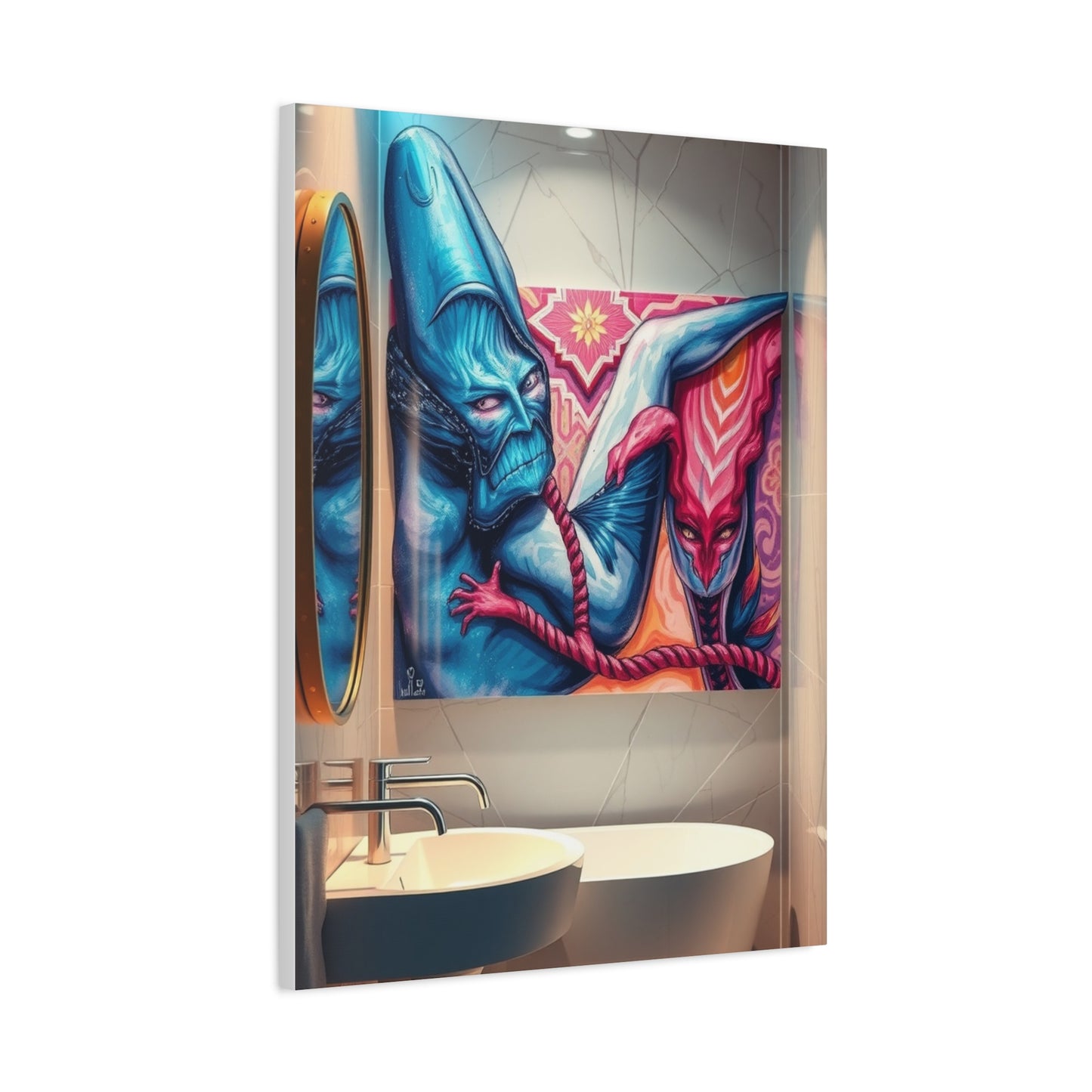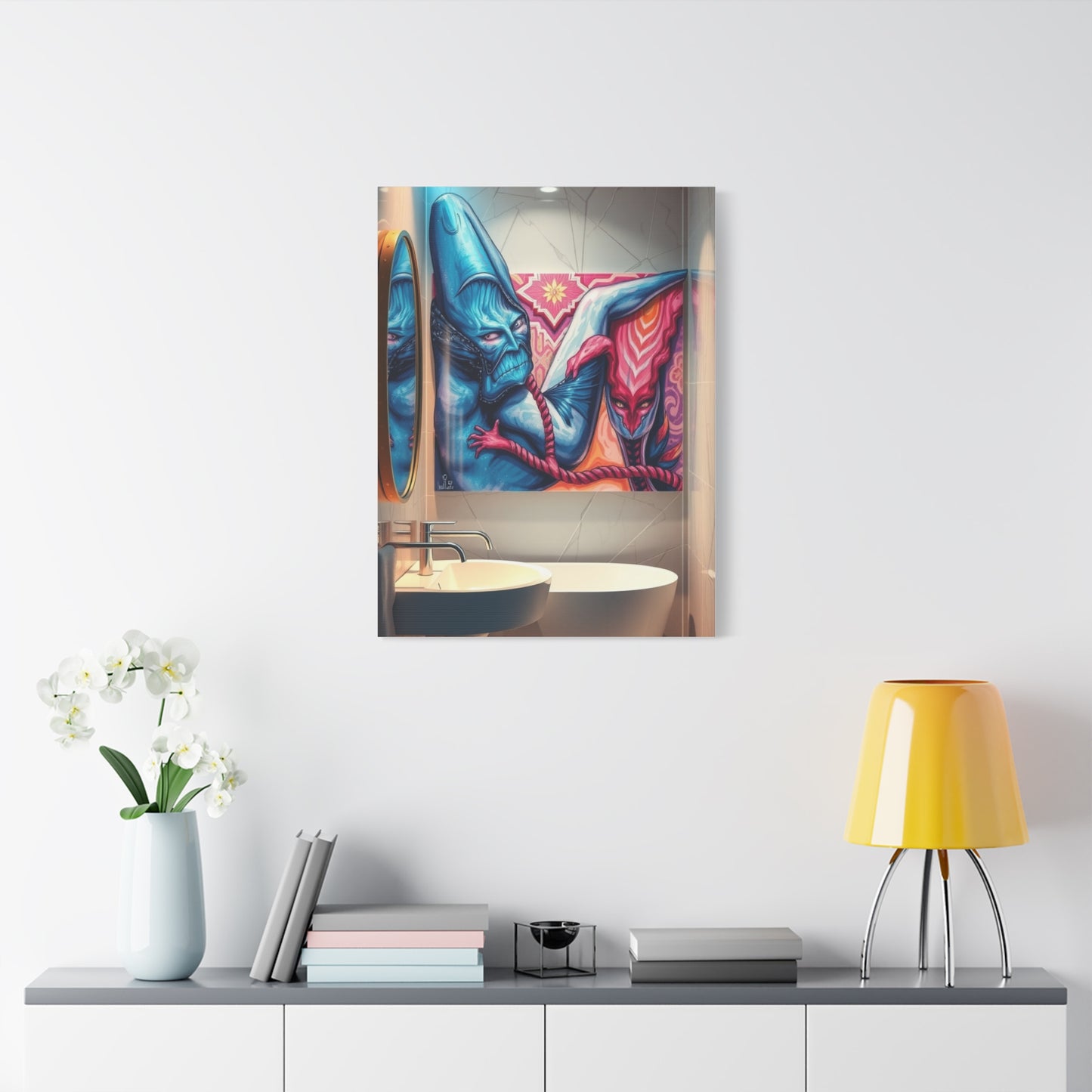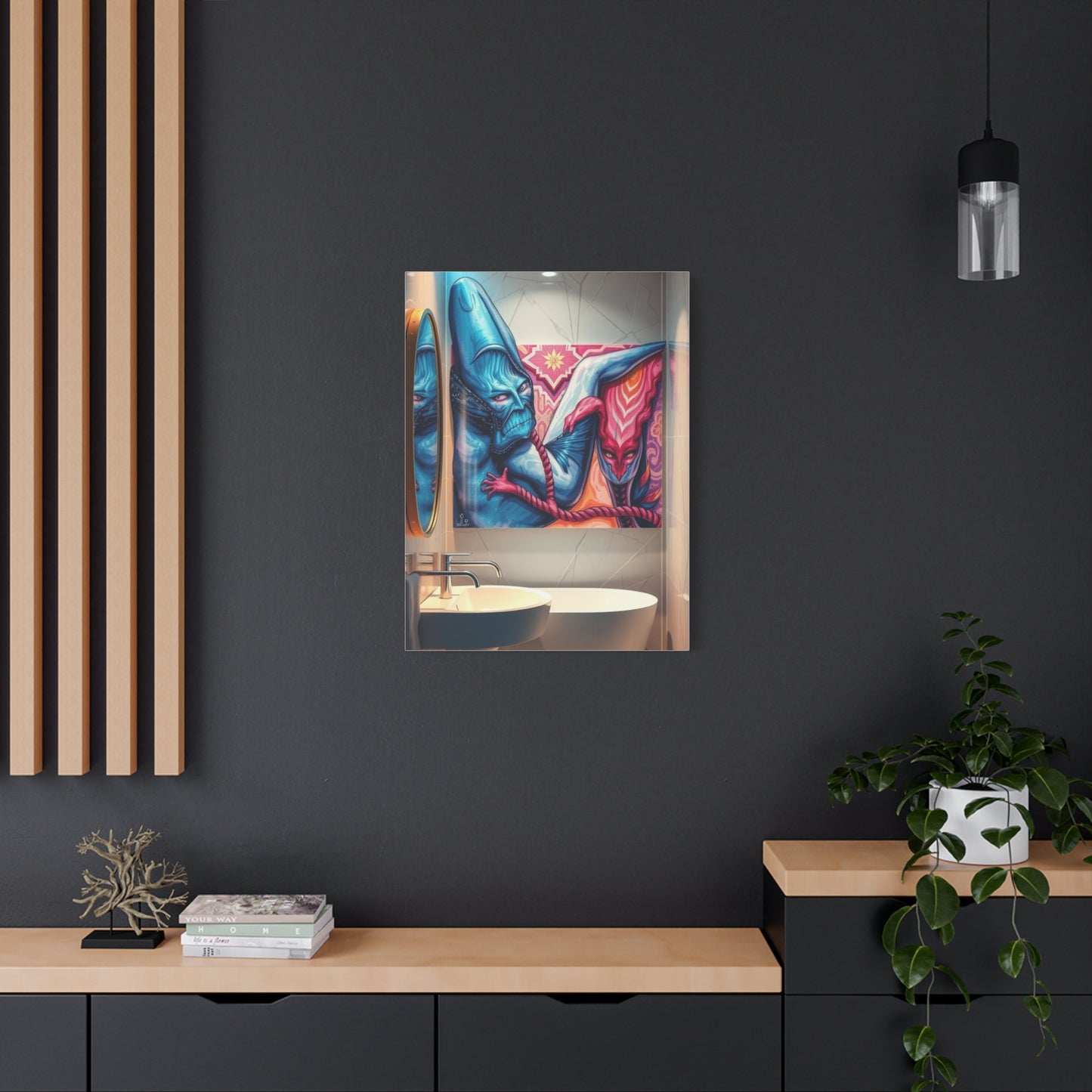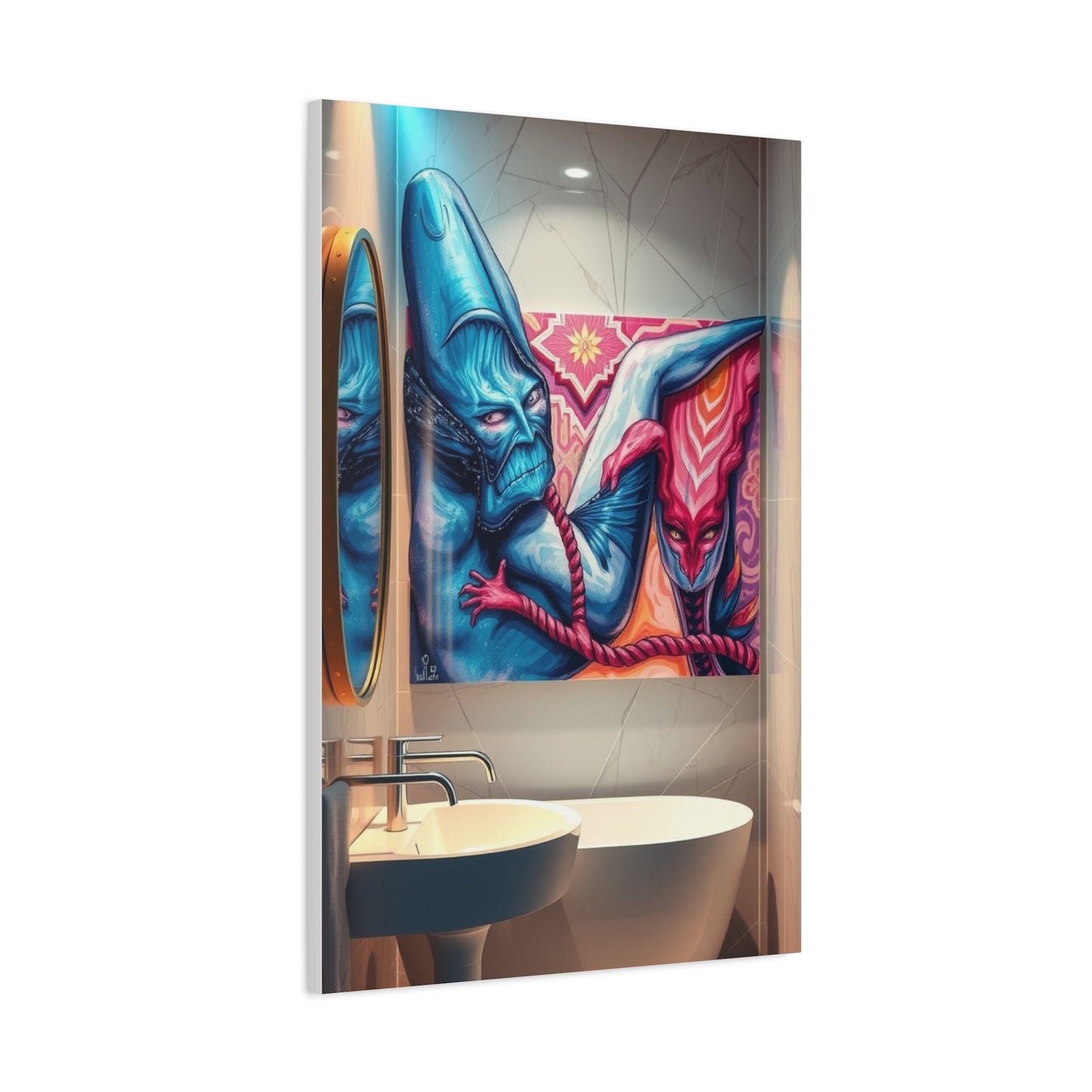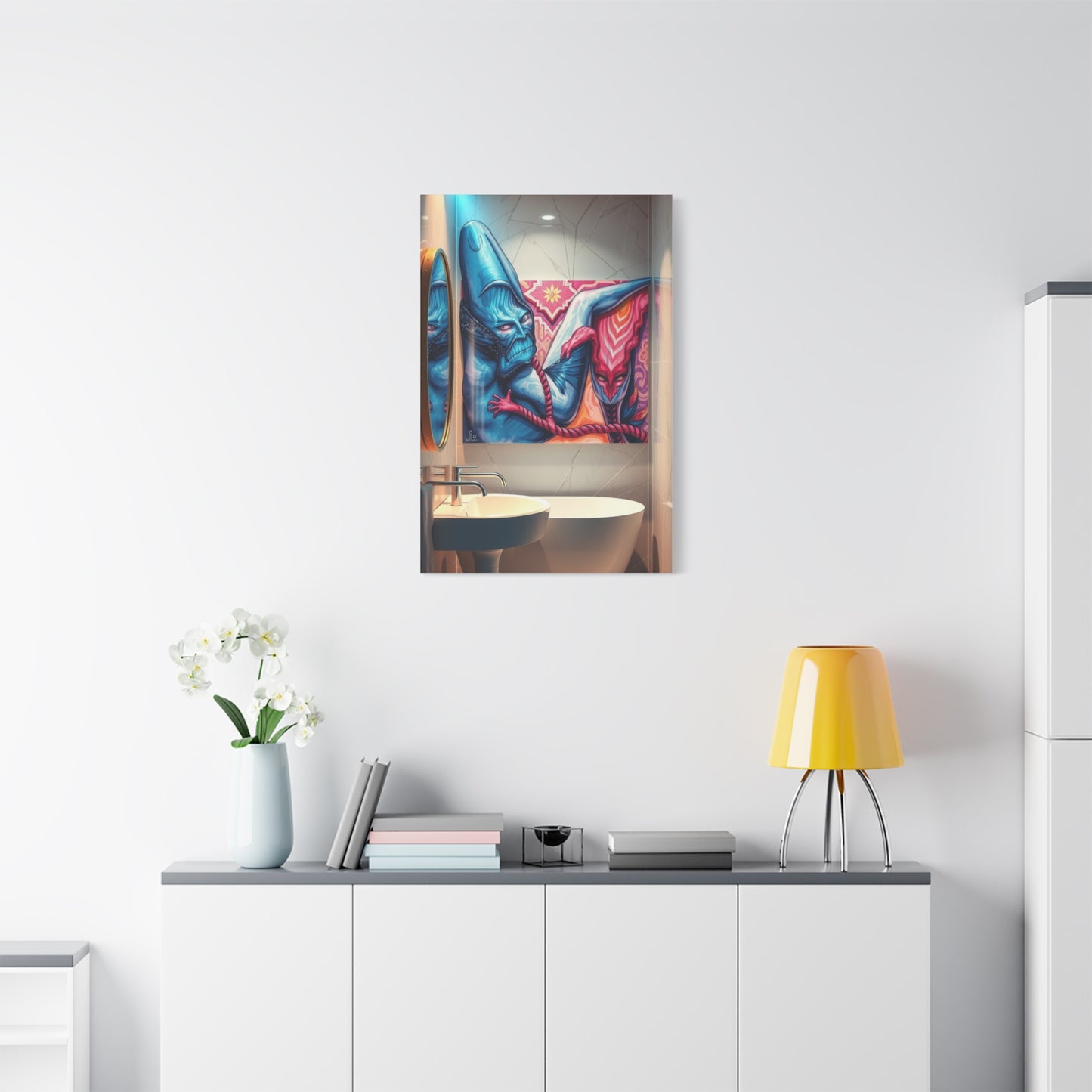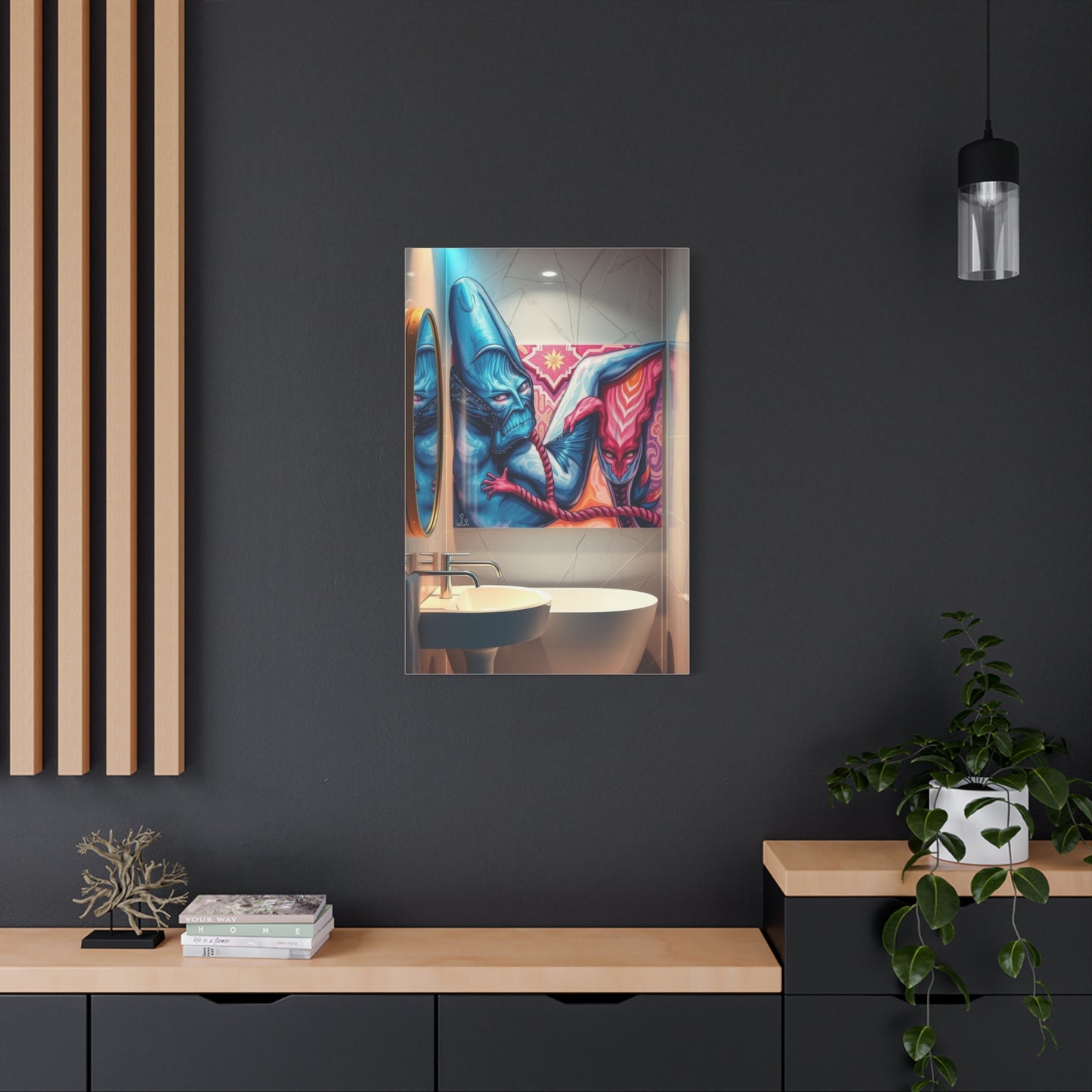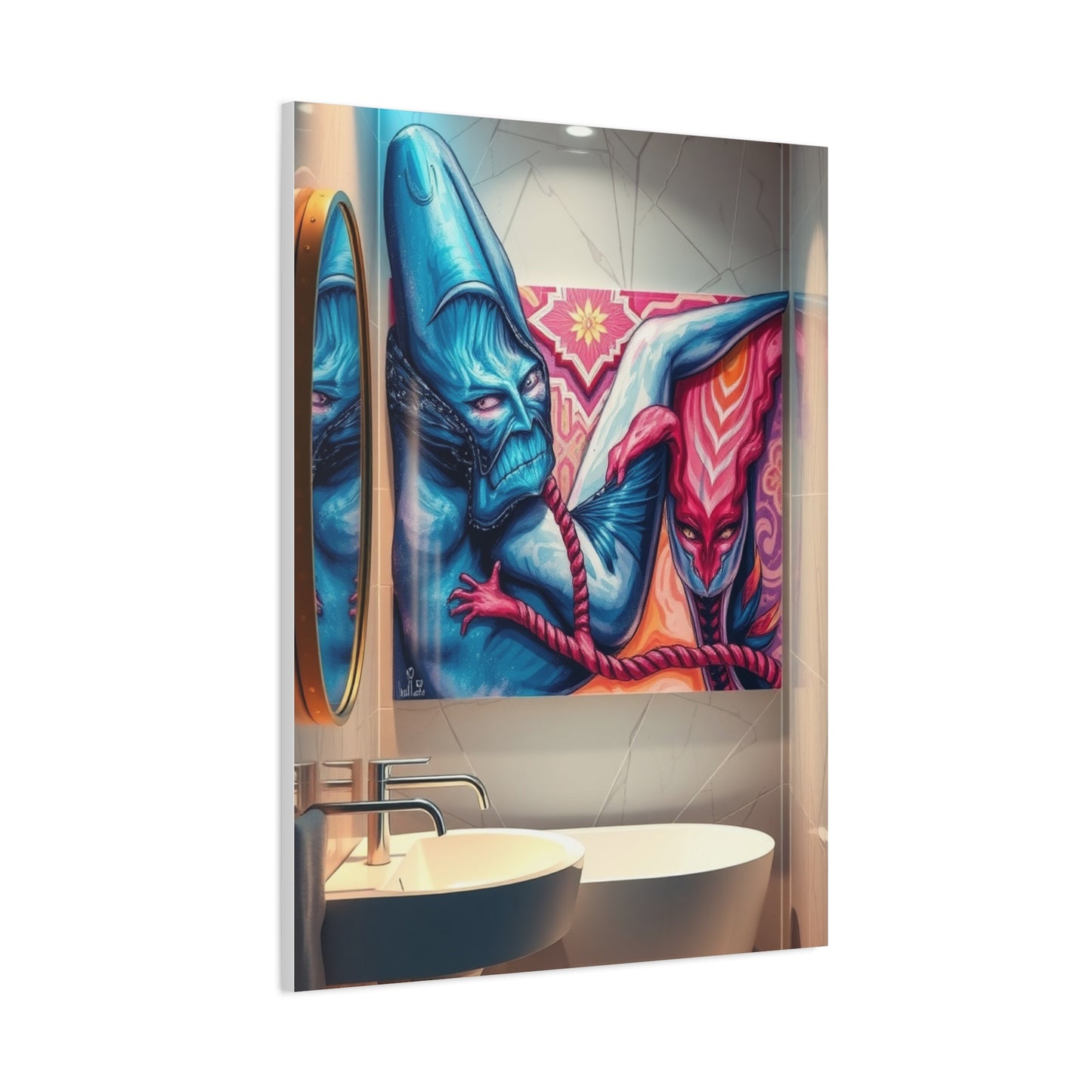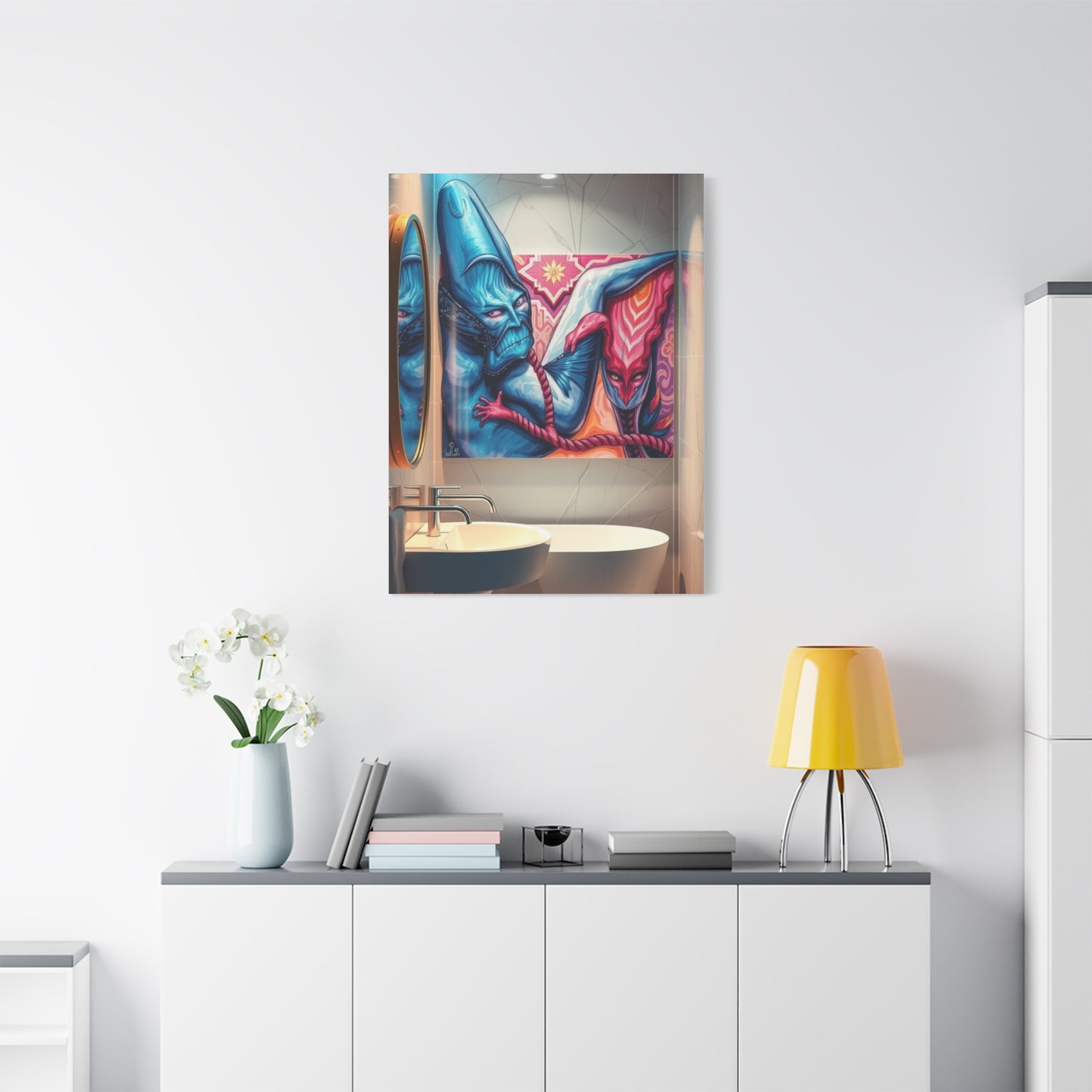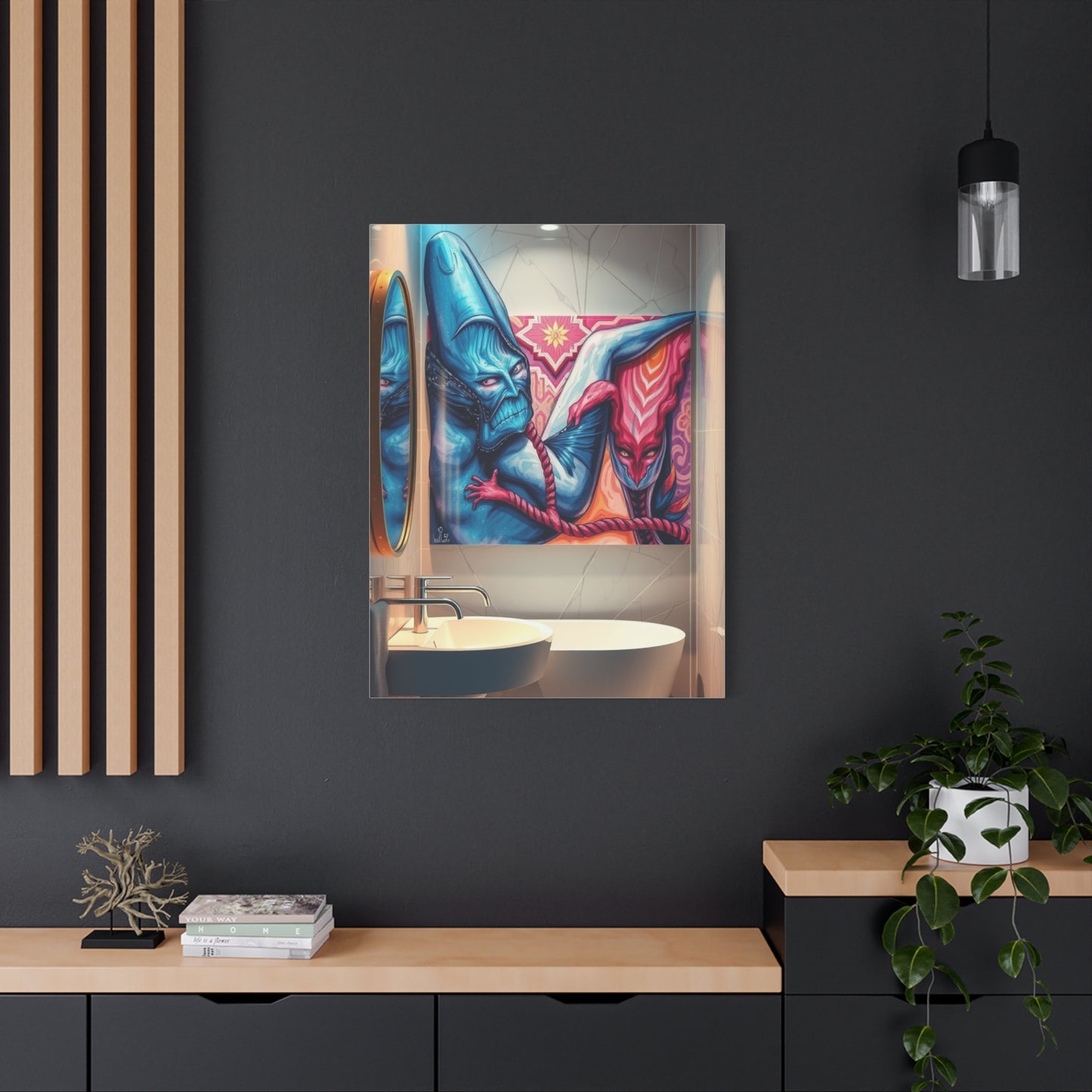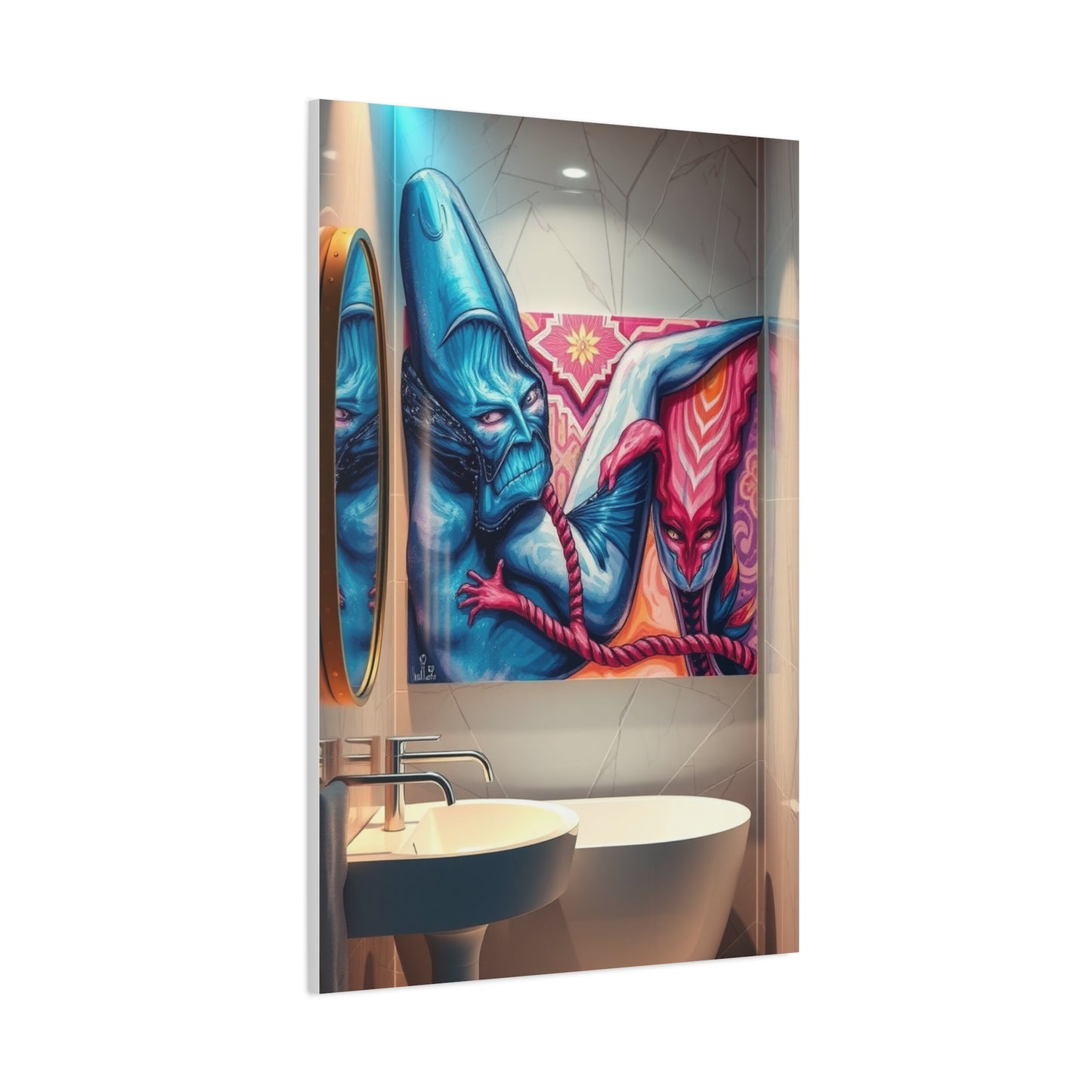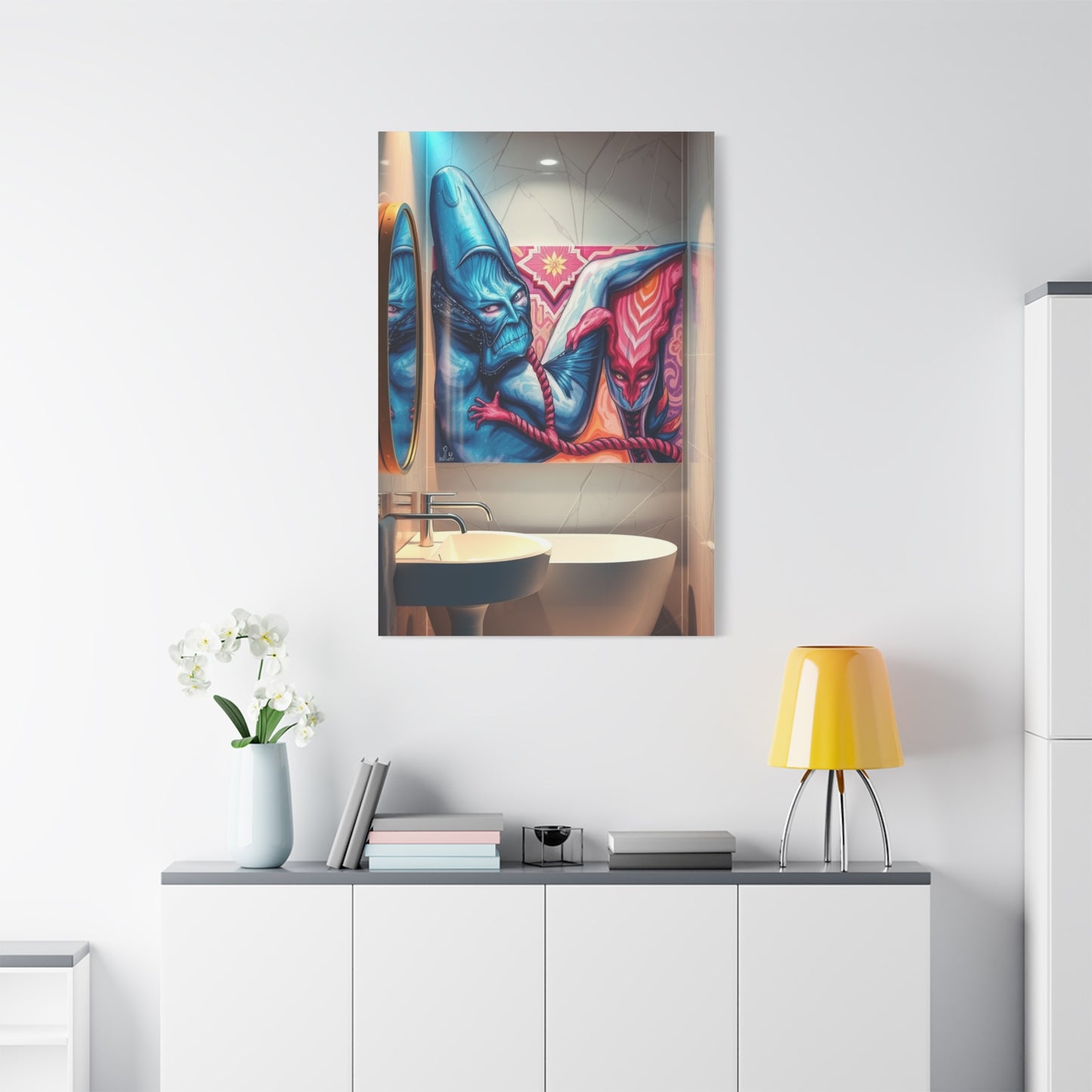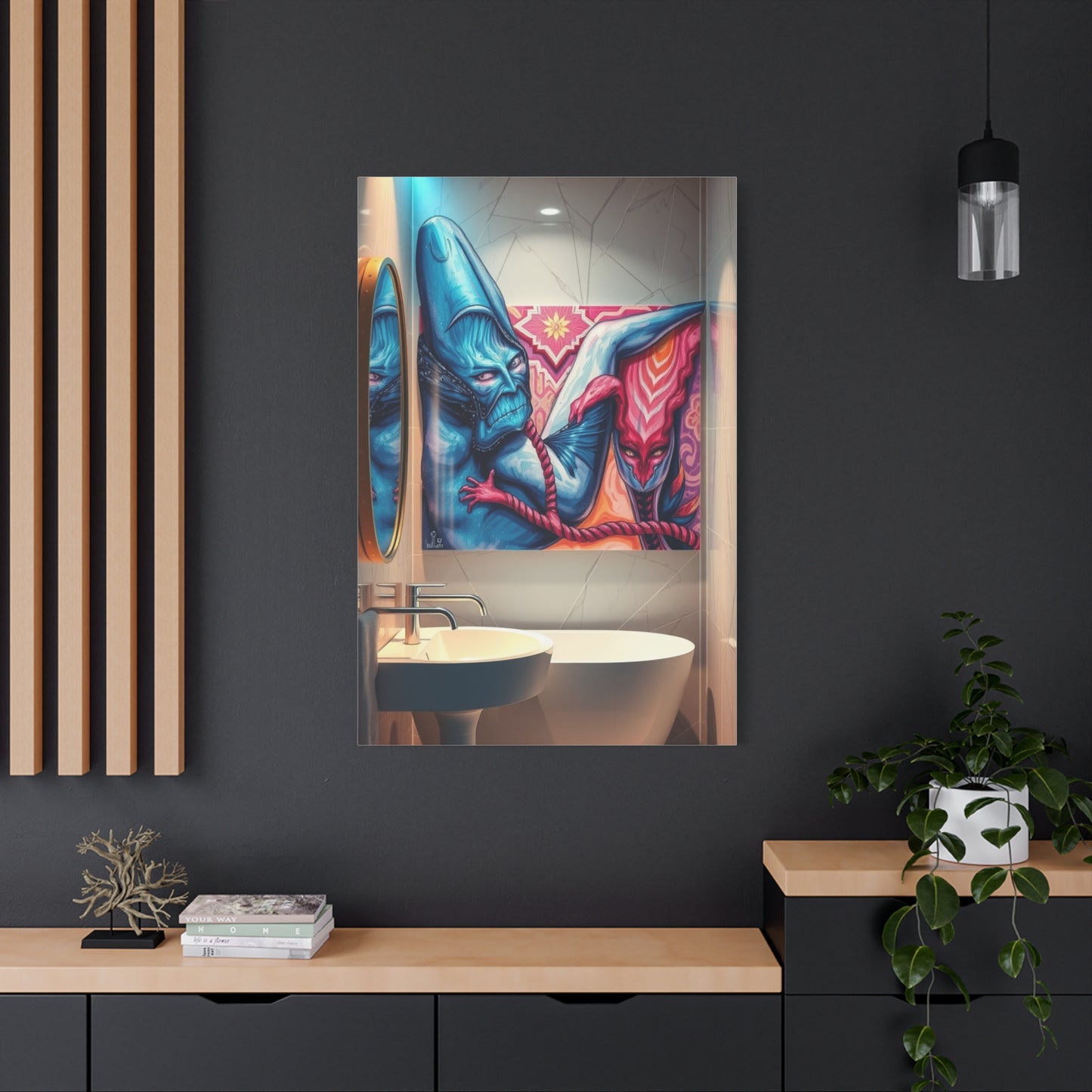The Gentle Touch of Elegance: Refined Sanctuary Canvases for Peaceful Homes
In today's fast-paced world, finding moments of tranquility within our homes has become increasingly important. The art of creating a refined sanctuary begins with carefully selected wall art that speaks to the soul and nurtures a sense of peace. Canvas masterpieces have the remarkable ability to transform any room into a haven of serenity, where stress melts away and inner calm prevails.
The journey toward creating your personal refuge starts with understanding how visual elements can influence our emotional state. When we surround ourselves with carefully chosen artwork that embodies tranquility and sophistication, we create an environment that naturally promotes relaxation and mental clarity. The power of refined sanctuary wall art lies not just in its aesthetic appeal, but in its ability to evoke feelings of peace and contentment that extend far beyond the visual experience.
Sophisticated canvas art serves as more than mere decoration; it becomes a gateway to mindfulness and reflection. Each brushstroke, color choice, and compositional element works together to create a harmonious visual narrative that speaks directly to our desire for balance and serenity. The careful selection of such artwork requires an understanding of how different visual elements can either promote or detract from the peaceful atmosphere we seek to cultivate.
The concept of sanctuary art extends beyond traditional landscape paintings or abstract compositions. It encompasses a wide range of artistic expressions that share common characteristics: gentle color palettes, balanced compositions, and themes that evoke natural harmony. These elements work synergistically to create visual experiences that support our psychological well-being and contribute to the overall ambiance of our living environments.
When selecting wall art for your refined sanctuary, consider pieces that feature soft, muted tones and flowing lines that guide the eye in a relaxed, unhurried manner. The goal is to create visual rhythms that mirror the gentle ebb and flow of natural cycles, promoting a sense of connection with the peaceful aspects of the natural world. This approach to art selection ensures that each piece contributes to the overall atmosphere of tranquility and sophistication.
Behind Peaceful Canvas Art
The human brain responds to visual stimuli in predictable ways, and understanding these responses can help us make more informed decisions about the artwork we choose for our sanctuaries. Research in environmental psychology has demonstrated that certain visual elements can trigger relaxation responses, reduce stress hormones, and promote feelings of well-being. This scientific foundation provides valuable insights into why some artwork creates an immediate sense of calm while other pieces may feel energizing or even agitating.
Color psychology plays a fundamental role in how we perceive and respond to canvas art. Cool colors such as blues, greens, and soft purples have been shown to lower heart rate and blood pressure, while warm colors in muted tones can create feelings of comfort and security. The key to selecting effective sanctuary wall art lies in choosing pieces that employ these psychological principles while maintaining aesthetic sophistication and personal relevance.
The composition of artwork also significantly impacts its calming effect. Pieces with balanced, symmetrical arrangements tend to promote feelings of stability and order, while gentle asymmetry can create visual interest without causing tension. Horizontal lines in artwork can evoke feelings of rest and tranquility, while vertical elements may inspire feelings of growth and aspiration when used judiciously within a peaceful composition.
Texture and brushwork contribute another layer to the psychological impact of canvas art. Smooth, flowing brushstrokes create different emotional responses than sharp, angular marks. The tactile quality that can be perceived even through visual observation adds depth to the viewing experience and can enhance the overall sense of serenity that the artwork provides.
The scale and proportion of artwork within a room also influence its psychological effect. Oversized pieces can create dramatic focal points that anchor a room in tranquility, while smaller works arranged thoughtfully can create intimate moments of reflection. The relationship between the artwork and its surrounding environment plays a crucial role in determining whether the piece will enhance or detract from the overall sanctuary atmosphere.
Selecting Colors That Promote Tranquility
The color palette of your sanctuary wall art forms the foundation of its calming influence. Colors have the power to alter our mood, energy levels, and overall sense of well-being. When curating artwork for a refined sanctuary, it's essential to understand how different hues can support or undermine the peaceful atmosphere you're trying to create.
Soft blues reign supreme in the realm of tranquil colors, evoking images of clear skies and calm waters. These hues have been scientifically proven to lower blood pressure and heart rate, making them ideal choices for sanctuary wall art. From powder blue to deeper navy tones, the blue spectrum offers endless possibilities for creating serene visual experiences. The key is selecting shades that feel appropriate for your specific environment and personal preferences while maintaining their calming properties.
Green tones bring the restorative power of nature into your sanctuary. From sage and eucalyptus to deeper forest greens, these colors connect us with the natural world and promote feelings of renewal and growth. Green has been associated with balance and harmony, making it an excellent choice for wall art intended to create peaceful environments. The natural associations of green help bridge the gap between indoor and outdoor experiences, bringing a sense of organic tranquility to your refined sanctuary.
Neutral tones provide the perfect backdrop for creating sophisticated, calming environments. Warm grays, soft beiges, and creamy off-whites create versatile foundations that can support other colors while maintaining their own serene qualities. These neutral palettes allow for subtle variations in tone and texture that add visual interest without creating distraction or tension.
Purple in its softer manifestations, such as lavender and lilac, brings a touch of elegance while maintaining calming properties. These colors have long been associated with contemplation and spirituality, making them appropriate choices for sanctuary wall art. The key is avoiding overly saturated purples that might feel too energizing or dramatic for a peaceful environment.
Earth tones, including soft browns, warm taupes, and muted ochres, ground your sanctuary in natural stability. These colors evoke feelings of security and connection to the natural world, providing a solid foundation for tranquil environments. When used skillfully in canvas art, earth tones can create sophisticated, layered compositions that feel both calming and visually rich.
Artistic Styles That Enhance Serenity
The style of artwork you choose for your sanctuary plays a crucial role in determining its overall effect on your sense of peace and well-being. Different artistic approaches can either support or detract from the tranquil atmosphere you're seeking to create. Understanding these various styles and their emotional impacts will help you make more informed decisions about the wall art that will best serve your sanctuary goals.
Impressionistic artwork excels at creating dreamy, contemplative atmospheres through its soft, blended brushstrokes and emphasis on light and color over sharp details. This style naturally lends itself to sanctuary settings because it invites contemplation rather than demanding immediate attention. The gentle, almost ethereal quality of impressionistic pieces allows viewers to project their own peaceful thoughts and feelings onto the artwork, creating a personalized meditation experience.
Minimalist abstract art offers another powerful approach to sanctuary wall art. By focusing on essential elements such as color, form, and composition while eliminating unnecessary details, minimalist pieces create visual rest for the eye and mind. These works often feature simple geometric forms, subtle color transitions, and balanced compositions that promote feelings of order and calm. The beauty of minimalist sanctuary art lies in its ability to create profound emotional impact through restraint and simplicity.
Landscape artwork, particularly pieces that depict serene natural scenes, provides an immediate connection to the calming influence of nature. Rolling hills, peaceful lakes, gentle meadows, and quiet forests all serve as subjects for sanctuary wall art that can transport viewers to tranquil outdoor environments. The key is selecting landscape pieces that emphasize peaceful rather than dramatic natural scenes, focusing on the restorative aspects of the natural world.
Contemporary abstract expressionism, when executed with sanctuary principles in mind, can create powerful focal points for peaceful environments. These pieces often feature flowing forms, organic shapes, and color fields that evoke emotional responses without relying on recognizable imagery. The abstract nature of these works allows for personal interpretation and contemplation, making them ideal for sanctuary settings where individual reflection and peace are prioritized.
Botanical and floral artwork brings the gentle beauty of plant life into your sanctuary. Soft depictions of flowers, leaves, and natural forms can create connections to growth, renewal, and the cycles of nature. These subjects naturally evoke feelings of peace and can serve as reminders of the beauty and tranquility found in the natural world.
Creating Visual Harmony Through Composition
The arrangement and composition of your sanctuary wall art significantly impacts its ability to promote feelings of peace and tranquility. Thoughtful composition considers not only individual pieces but also how they work together to create a cohesive, calming visual environment. This holistic approach ensures that your wall art contributes to rather than detracts from your sanctuary goals.
Balance forms the cornerstone of peaceful composition. Symmetrical arrangements can create feelings of stability and order, while asymmetrical compositions that maintain visual equilibrium can add interest without creating tension. The key is ensuring that no single element dominates the composition in a way that disrupts the overall sense of harmony. This balance extends to color distribution, visual weight, and the relationship between different elements within the composition.
Scale relationships between different pieces of wall art contribute significantly to the overall harmony of your sanctuary. Large statement pieces can serve as anchors that ground the entire composition, while smaller works can provide intimate details that reward closer inspection. The proportional relationships between these different scales should feel natural and unforced, creating a visual hierarchy that guides the eye through the composition in a relaxed, contemplative manner.
Spacing and negative areas play crucial roles in creating restful compositions. Overcrowded walls can feel chaotic and stressful, while thoughtfully spaced artwork allows each piece to breathe and contribute to the overall peaceful atmosphere. The areas between artworks are as important as the artworks themselves, providing visual rest and allowing the eye to move naturally through the composition.
Color coordination across multiple pieces helps create visual unity while avoiding monotony. This doesn't mean all pieces must share identical color palettes, but rather that they should share enough common elements to feel deliberately related. Subtle color echoes, complementary tones, and varied intensities of similar hues can create sophisticated color relationships that enhance the overall sanctuary atmosphere.
Thematic consistency supports compositional harmony by ensuring that all pieces contribute to the same overall emotional experience. This doesn't require literal similarity but rather shared qualities such as mood, energy level, or emotional tone. A composition might include abstract pieces, landscapes, and botanical subjects that all share gentle, contemplative qualities, creating thematic unity through emotional resonance rather than visual similarity.
The Role of Natural Elements in Sanctuary Wall Art
Nature serves as an infinite source of inspiration for sanctuary wall art, providing countless examples of the harmony, balance, and beauty that we seek to cultivate in our peaceful environments. By incorporating natural elements into your wall art selection, you create connections to the restorative power of the natural world while bringing its calming influence into your refined sanctuary.
Water imagery holds particular power in sanctuary wall art due to its universal associations with cleansing, flow, and tranquility. Gentle streams, still lakes, morning mist, and soft rain all serve as subjects that can evoke immediate feelings of peace and renewal. The movement suggested by water imagery can create visual rhythms that mirror the meditative qualities of actual water, promoting relaxation and contemplation.
Sky and cloud formations offer another rich source of sanctuary imagery. The ever-changing nature of clouds and the infinite depth of sky create subjects that invite contemplation while suggesting freedom and expansiveness. Soft, billowing clouds against pale skies can create particularly effective sanctuary wall art that promotes feelings of lightness and peace.
Plant life and botanical subjects bring the gentle energy of growth and renewal into sanctuary environments. Delicate flowers, flowing grasses, peaceful trees, and lush foliage all serve as reminders of nature's cycles and the beauty of organic forms. These subjects naturally evoke feelings of connection to the earth and the restorative power of natural environments.
Seasonal imagery can add temporal depth to sanctuary wall art while connecting inhabitants to natural cycles. Spring blossoms suggest renewal and hope, summer scenes evoke abundance and warmth, autumn imagery brings thoughts of reflection and change, while winter scenes promote feelings of rest and contemplation. Each season offers unique opportunities for creating peaceful, nature-inspired wall art.
Mountain and horizon imagery provides powerful focal points for sanctuary wall art through their suggestions of permanence, stability, and vast perspective. Gentle mountain profiles, rolling hills, and distant horizons all create sense of expansiveness that can help occupants feel connected to something larger than themselves while promoting feelings of peace and contemplation.
Canvas Textures and Their Impact on Peaceful Environments
The physical texture of canvas artwork contributes significantly to its ability to create peaceful, sanctuary-like environments. Different textures create varied visual and tactile experiences that can either support or detract from the overall sense of tranquility you're seeking to achieve. Understanding how texture influences our perception of artwork helps in making more informed choices about the canvas pieces that will best serve your sanctuary goals.
Smooth, even canvas textures create subtle, refined surfaces that promote feelings of calm and order. These textures allow colors and forms to flow seamlessly across the canvas surface, creating unified visual experiences that don't distract from the artwork's peaceful content. Smooth textures are particularly effective for minimalist pieces and gentle abstract compositions where the focus is on color and form rather than surface variation.
Slightly textured canvases add visual interest and depth while maintaining peaceful qualities. Light impasto techniques and subtle canvas weaves create surfaces that catch and reflect light in gentle ways, adding dimensionality to artwork without creating visual tension. These textures can enhance the meditative quality of sanctuary wall art by providing subtle details that reward closer contemplation.
Organic textures that mirror natural surfaces can strengthen the connection between sanctuary wall art and the natural world. Canvas treatments that suggest weathered stone, tree bark, or flowing water can enhance the natural themes of artwork while adding tactile interest that engages multiple senses. These textures should remain subtle enough to support rather than compete with the artwork's primary imagery.
Mixed media textures allow for sophisticated layering effects that can create rich, contemplative surfaces. The combination of different materials and techniques on canvas can produce complex textures that invite extended viewing and reflection. The key is ensuring that these textural elements contribute to rather than detract from the overall peaceful atmosphere of the artwork.
Matte versus glossy finishes significantly impact how artwork interacts with light and how viewers perceive the piece. Matte finishes tend to absorb light evenly, creating subtle, non-reflective surfaces that feel calm and contemplative. Glossy finishes can add vibrancy and depth but may also create reflections that could be distracting in sanctuary environments. The choice between these finishes should consider the lighting conditions and overall atmosphere of your sanctuary.
Lighting Considerations for Sanctuary Wall Art
The way your sanctuary wall art is illuminated significantly affects its ability to create peaceful, contemplative environments. Proper lighting enhances the colors, textures, and overall impact of artwork while supporting the tranquil atmosphere you're working to achieve. Understanding the relationship between light and art helps ensure that your carefully selected pieces can fulfill their sanctuary potential.
Natural lighting provides the most dynamic and authentic way to experience sanctuary wall art. The changing quality of natural light throughout the day creates an ever-evolving relationship between artwork and environment, keeping the visual experience fresh and engaging. Morning light tends to be soft and warm, perfect for gentle contemplation, while afternoon light can bring out deeper colors and richer details in artwork.
Indirect natural lighting offers many of the benefits of natural illumination while avoiding the harsh contrasts and potential damage that direct sunlight can cause. North-facing walls typically receive consistent, gentle natural light that beautifully illuminates sanctuary wall art without creating glare or hot spots. This type of lighting allows colors to appear true and natural while supporting the peaceful atmosphere of your sanctuary.
Artificial lighting systems designed for artwork can provide consistent, controllable illumination that highlights your sanctuary wall art to best advantage. Track lighting, picture lights, and recessed spotlights all offer different approaches to artwork illumination. The key is choosing lighting that complements rather than overwhelms the peaceful qualities of your selected pieces.
Warm versus cool artificial lighting creates different atmospheres that can either support or conflict with sanctuary goals. Warm light (2700K-3000K) creates cozy, intimate feelings that often work well with earth-toned and warm-colored artwork. Cool light (4000K-5000K) can make colors appear more vibrant and create crisp, clean atmospheres that work well with blue and green-dominated pieces.
Ambient lighting throughout your sanctuary affects how wall art is perceived within the overall environment. Gentle, even ambient lighting creates peaceful backgrounds against which artwork can be properly appreciated. Harsh or uneven ambient lighting can create visual competition that detracts from the calming effect of carefully selected sanctuary wall art.
Seasonal Adaptations in Sanctuary Wall Art
The changing seasons offer opportunities to refresh and renew your sanctuary wall art, keeping your peaceful environment dynamic and responsive to natural cycles. Seasonal adaptations don't require complete overhauls of your art collection but rather thoughtful adjustments that acknowledge and celebrate the unique qualities of each season while maintaining the overall tranquil atmosphere of your sanctuary.
Spring transformations can bring fresh energy to sanctuary wall art through the introduction of pieces that celebrate renewal, growth, and awakening. Soft greens, gentle pinks, and images of emerging plant life can refresh your sanctuary after the contemplative stillness of winter. These seasonal additions should maintain the peaceful qualities essential to sanctuary environments while acknowledging the hopeful energy of the season.
Summer adjustments might incorporate cooler colors and imagery that provides visual relief from seasonal heat. Blues, soft grays, and images of cool water or shaded retreats can help maintain the tranquil atmosphere of your sanctuary while responding to seasonal changes. The goal is creating visual cooling effects that support physical comfort while preserving the peaceful qualities of your sanctuary.
Autumn modifications can embrace the contemplative quality of the harvest season through warm earth tones and imagery that celebrates the beauty of change and reflection. Rich ochres, soft browns, and gentle oranges can create cozy, contemplative atmospheres that support the introspective mood often associated with autumn. These seasonal changes should feel natural and supportive rather than dramatically different from your sanctuary's usual atmosphere.
Winter adaptations often focus on creating warmth and comfort during the season's darker, colder months. Soft whites, gentle grays, and imagery that suggests peaceful rest can support the contemplative quality of winter while providing visual warmth and comfort. The goal is creating sanctuary wall art that acknowledges the season's unique character while maintaining the peaceful, restorative qualities essential to sanctuary environments.
Year-round core pieces provide continuity and stability within your seasonal adaptations. These foundational artworks remain constant while seasonal additions come and go, ensuring that your sanctuary maintains its essential character while remaining responsive to natural cycles. This approach creates dynamic sanctuary environments that feel both stable and naturally evolving.
Cultural Influences on Peaceful Wall Art
Different cultural traditions offer unique perspectives on creating peaceful, sanctuary-like environments through visual art. Understanding these diverse approaches can broaden your options for sanctuary wall art while connecting you to time-tested wisdom about creating tranquil, harmonious living environments. These cultural influences can be incorporated respectfully and thoughtfully to enhance your personal sanctuary.
Eastern philosophical traditions have long emphasized the importance of harmony and balance in living environments. Chinese feng shui principles offer specific guidance about color, composition, and imagery that promotes peaceful energy flow. Japanese aesthetic concepts such as wabi-sabi celebrate the beauty of imperfection and impermanence, offering approaches to sanctuary wall art that find peace in natural aging and gentle asymmetry.
Scandinavian design principles emphasize simplicity, functionality, and connection to nature in ways that directly support sanctuary goals. The concept of hygge suggests creating cozy, comfortable environments that promote well-being and contentment. These principles translate beautifully to sanctuary wall art through emphasis on natural materials, muted colors, and simple, peaceful imagery.
Mediterranean influences bring warm, earth-connected approaches to peaceful environments. The tradition of creating outdoor living areas that blend seamlessly with natural surroundings offers inspiration for sanctuary wall art that celebrates the beauty of sun, sea, and earth. These influences can be incorporated through warm color palettes, natural textures, and imagery that evokes peaceful outdoor experiences.
Indigenous traditions from around the world offer profound connections to natural cycles and the spiritual dimensions of living environments. Many indigenous cultures view art as inseparable from spiritual practice and daily life, offering perspectives on sanctuary wall art that go beyond mere decoration to encompass deeper connections with natural and spiritual worlds.
Contemporary multicultural approaches allow for thoughtful blending of different cultural influences in ways that create unique, personal sanctuary environments. The key is approaching different traditions with respect and understanding, incorporating elements that genuinely resonate with your sanctuary goals rather than superficially adopting visual styles without understanding their deeper meanings.
Building a Sanctuary Art Collection
Creating a refined sanctuary through wall art represents an investment in your daily well-being and long-term quality of life. Understanding the economic aspects of building a sanctuary art collection helps you make informed decisions that balance aesthetic goals with financial realities while ensuring that your investment contributes meaningfully to your personal sanctuary.
Budget planning for sanctuary wall art should consider both immediate purchases and long-term collection building. Starting with a few key pieces that establish the basic atmosphere of your sanctuary allows you to experience the benefits while gradually expanding your collection over time. This approach prevents overwhelming initial expenses while ensuring that each addition genuinely contributes to your sanctuary goals.
Original artwork versus reproductions presents different value propositions for sanctuary collections. Original pieces offer unique character and potential investment value but require larger financial commitments. High-quality reproductions can provide many of the sanctuary benefits at more accessible price points, allowing you to create peaceful environments while staying within budget constraints.
Local artists and emerging talents often provide opportunities to acquire original sanctuary wall art at more accessible prices while supporting artistic communities. Local art fairs, studio tours, and emerging artist shows can be excellent sources for discovering pieces that serve your sanctuary needs while fitting within budget parameters. Building relationships with local artists can also provide access to commission opportunities for custom sanctuary pieces.
Gallery relationships can provide access to established artists and professional guidance in building sanctuary collections. Many galleries offer payment plans, trade-in opportunities, and expert advice that can help you make more informed decisions about sanctuary wall art investments. Building these relationships over time can provide ongoing access to pieces that fit your sanctuary aesthetic and budget.
Alternative acquisition methods such as art rentals, leasing programs, and artist cooperatives can provide access to higher-quality sanctuary wall art than might otherwise be affordable. These options allow you to enjoy museum-quality pieces in your sanctuary while maintaining flexibility and managing costs. Some programs also offer purchase options that apply rental payments toward eventual ownership.
Maintenance and Care for Canvas Sanctuary Art
Proper care and maintenance of your sanctuary wall art ensures that these peaceful pieces continue to provide beauty and tranquility for years to come. Understanding the specific needs of canvas artwork helps protect your investment while maintaining the visual qualities that make these pieces effective elements in your refined sanctuary.
Environmental protection forms the foundation of canvas art care. Controlling temperature, humidity, and air quality helps prevent damage from expansion, contraction, and environmental pollutants. Stable environmental conditions not only protect the physical integrity of canvas artwork but also ensure that colors and textures remain true to the artist's original vision.
Light management protects canvas art from fading and deterioration while ensuring optimal viewing conditions. UV-filtering window treatments, appropriate artificial lighting levels, and rotation of displayed pieces can all contribute to long-term preservation. The goal is balancing protection with the ability to properly enjoy and benefit from your sanctuary wall art.
Cleaning procedures for canvas art require gentle approaches that remove dust and pollutants without damaging delicate surfaces. Soft brushes, appropriate cleaning solutions, and professional cleaning services when necessary all play roles in maintaining the appearance and longevity of sanctuary wall art. Regular maintenance prevents the accumulation of dirt and grime that can dull colors and obscure details.
Protective measures such as glazing, framing, and appropriate hanging systems provide additional safeguards for canvas artwork. These protections should be selected and installed by professionals who understand the specific needs of different types of canvas art. Proper protection enhances longevity without interfering with the visual impact of sanctuary pieces.
Documentation and insurance considerations become important as sanctuary art collections grow in size and value. Maintaining records of purchases, conditions, and any conservation work helps protect investments while providing information useful for insurance claims if necessary. Professional appraisals may be appropriate for valuable pieces, ensuring adequate insurance coverage.
Personal Connection and Emotional Resonance
The most effective sanctuary wall art creates personal connections that go beyond mere visual appeal to touch something deeper within the viewer. Understanding how to identify and cultivate these emotional connections ensures that your chosen pieces will continue to provide meaning and tranquility throughout the changing circumstances of life.
Personal meaning in sanctuary wall art often comes from connections to significant experiences, memories, or aspirations. A landscape that reminds you of a peaceful vacation, colors that evoke feelings of security from childhood, or abstract forms that represent personal growth all create deeper levels of engagement with artwork than purely aesthetic appreciation. These personal connections strengthen over time, making the art increasingly valuable to your sanctuary experience.
Emotional resonance develops through regular interaction with sanctuary wall art in quiet, contemplative moments. The pieces that continue to reward attention and provide new insights during different moods and life circumstances prove their worth as sanctuary elements. This ongoing relationship between viewer and artwork creates the deeper levels of meaning that distinguish true sanctuary pieces from mere decoration.
Symbolic significance can add layers of meaning to sanctuary wall art that extend beyond immediate visual impact. Imagery that represents concepts important to your personal philosophy, spiritual beliefs, or life goals creates connections that deepen over time. These symbolic elements don't need to be obvious or literal but should resonate authentically with your values and aspirations.
Intuitive selection often identifies the most effective sanctuary wall art pieces. Beyond analytical considerations of color, composition, and style, paying attention to immediate emotional responses and gut feelings can guide you toward pieces that will provide long-term satisfaction and meaning. Trusting these intuitive responses while also considering technical and aesthetic factors often leads to the most successful sanctuary art choices.
Growth and evolution in personal taste and life circumstances mean that sanctuary wall art collections naturally change over time. Pieces that once provided peace and meaning may no longer resonate, while new acquisitions may better serve evolving sanctuary needs. Viewing these changes as natural progressions rather than mistakes helps maintain positive relationships with your sanctuary art collection.
Therapeutic Applications of Sanctuary Wall Art
The carefully selected wall art in your refined sanctuary can serve therapeutic purposes that extend beyond simple relaxation to support mental health, emotional healing, and personal growth. Understanding these therapeutic applications helps you make more intentional choices about sanctuary art while maximizing its positive impact on your well-being.
Stress reduction through visual art has been scientifically documented in numerous studies. Viewing peaceful, harmonious artwork can lower cortisol levels, reduce blood pressure, and promote the release of feel-good neurotransmitters. Your sanctuary wall art serves as a readily available stress-reduction tool that works passively throughout your daily activities while providing active benefits during focused viewing sessions.
Meditation support through appropriate wall art can enhance contemplative practices by providing focal points that encourage mindful attention. Abstract pieces, mandala-inspired compositions, or gentle natural imagery can serve as meditation anchors that help quiet mental chatter and promote deeper states of awareness. The key is selecting pieces that invite contemplation without being overly stimulating or distracting.
Mood regulation benefits from sanctuary wall art that provides consistent visual support for emotional equilibrium. Colors, compositions, and imagery that promote feelings of calm and well-being can help stabilize mood fluctuations and provide gentle emotional support during difficult periods. This regulatory function works both consciously and unconsciously, influencing emotional states through regular exposure.
Memory and cognitive function can benefit from engagement with meaningful sanctuary wall art. Pieces that tell stories, evoke memories, or invite imaginative responses provide gentle cognitive stimulation that keeps the mind active and engaged. This mental exercise supports cognitive health while remaining peaceful and non-stressful.
Healing environments created through thoughtful sanctuary wall art can support recovery from physical illness, emotional trauma, or life transitions. The peaceful, supportive atmosphere created by appropriate artwork provides a backdrop for healing processes while offering visual confirmation that beauty and tranquility remain present even during difficult times.
Creating Cohesive Sanctuary Themes
Developing a cohesive theme for your sanctuary wall art creates visual unity while ensuring that all pieces work together to support your overall goals of peace and tranquility. A well-developed theme provides guidance for art selection while allowing for personal expression and evolution over time.
Natural harmony themes draw inspiration from the balanced, peaceful qualities found in natural environments. This approach might include landscape imagery, botanical subjects, and abstract pieces that echo natural forms and color palettes. The unifying element is the connection to nature's inherent wisdom about balance, growth, and peaceful coexistence.
Minimalist serenity themes emphasize simplicity, clean lines, and restrained color palettes that create calm through visual restraint. This approach focuses on essential elements while eliminating visual clutter that might disturb peaceful atmospheres. The sophistication comes from the careful selection and arrangement of a few perfect pieces rather than abundance of decoration.
Cultural inspiration themes draw from specific traditions or philosophies that emphasize peaceful living and harmony with nature. Whether inspired by Japanese minimalism, Scandinavian hygge, or Mediterranean outdoor living, these themes provide rich sources of guidance for creating cohesive sanctuary environments.
Personal journey themes reflect individual experiences, values, and aspirations while maintaining peaceful qualities. This highly personalized approach creates sanctuary wall art collections that tell meaningful stories while supporting the owner's ongoing growth and development. The theme evolves naturally as life circumstances change.
Seasonal rhythm themes acknowledge and celebrate natural cycles through artwork that changes or reveals different aspects throughout the year. This dynamic approach keeps sanctuary environments fresh and engaging while maintaining connections to natural rhythms that support well-being.
Professional Design Integration
Working with design professionals can enhance your sanctuary wall art selection and arrangement while ensuring that artistic choices support rather than conflict with other design elements. Understanding how to collaborate effectively with designers helps you achieve more sophisticated and cohesive sanctuary environments.
Art consultants specialize in helping clients select and arrange artwork that serves specific aesthetic and functional goals. These professionals bring expertise about artists, market values, and design principles that can help you make more informed decisions about sanctuary wall art. They can also provide access to artists and pieces that might not be readily available through other channels.
Designers experienced in wellness-focused environments understand how to create cohesive designs that support mental and emotional well-being. These professionals can help integrate your sanctuary wall art with other design elements such as furniture, lighting, and architectural features to create unified environments that effectively promote peace and tranquility.
Collaboration approaches that maintain your personal vision while benefiting from professional expertise require clear communication about sanctuary goals and preferences. The most successful collaborations balance professional guidance with personal ownership of the final decisions, ensuring that the result authentically reflects your sanctuary aspirations.
Budget optimization through professional guidance can help you achieve better results within financial constraints. Design professionals often have access to resources, trade discounts, and creative solutions that can extend your sanctuary art budget while ensuring professional-quality results.
Long-term planning with design professionals can help you create sanctuary wall art collections that grow and evolve coherently over time. This approach prevents costly mistakes while ensuring that new additions continue to support your overall sanctuary vision as your needs and circumstances change.
Conclusion
The journey of creating a refined sanctuary through carefully selected wall art represents one of the most rewarding investments you can make in your daily well-being and long-term quality of life. Throughout this comprehensive exploration, we have discovered that sanctuary wall art serves far more than decorative purposes; it actively contributes to our mental health, emotional stability, and spiritual growth through its profound ability to create environments that nurture peace and tranquility.
The power of canvas masterpieces to transform ordinary rooms into havens of serenity lies in their unique combination of visual beauty, psychological impact, and personal meaning. When we surround ourselves with artwork that embodies the principles of harmony, balance, and natural wisdom, we create living environments that continuously support our highest aspirations for peace and contentment. These carefully chosen pieces become silent partners in our daily quest for tranquility, working around the clock to maintain atmospheres conducive to relaxation, reflection, and renewal.
The scientific understanding of how visual elements affect our psychological and physiological responses provides a solid foundation for making informed decisions about sanctuary wall art. Colors that lower stress hormones, compositions that promote feelings of stability, and textures that invite contemplation all work together to create environments that actively support our well-being rather than merely looking attractive. This evidence-based approach to art selection ensures that our sanctuary investments provide measurable returns in terms of improved quality of life.
The diversity of artistic styles, cultural influences, and personal approaches available for creating sanctuary environments means that everyone can find ways to incorporate these principles into their living situations, regardless of budget, personal taste, or physical constraints. From minimalist abstract pieces to detailed botanical studies, from contemporary digital art to traditional landscape paintings, the key lies not in specific artistic categories but in selecting pieces that genuinely resonate with your personal vision.

















